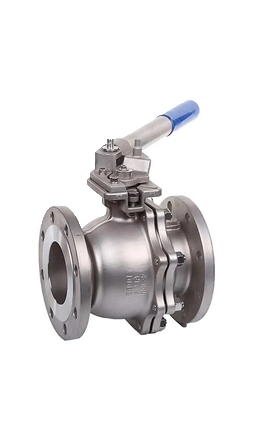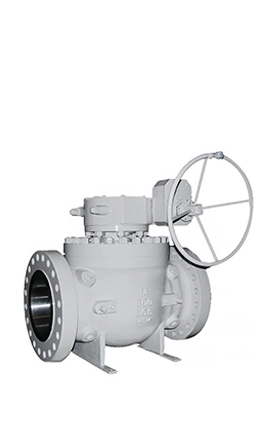KFTE top entry ball valve have been designed for Severe Service and generally used in the Petrochemical, Refining, Upstream Oil and Gas, Power and Chemical applications. The designs incorporate many technically advanced features which ensure reliable and repeatable shut off performance whilst providing the highest levels of safety as demanded by these industries. Top entry ball valve can be accessed by removing the cover without extracting the valve from the line. With some special maintenance tools, ball and seatrings can be removed and repaired or spare parts can be changed.


1. Oil and Gas Industry
Top entry ball valves are critical in upstream, midstream, and downstream operations. They handle crude oil, natural gas, and refined products, especially in high-pressure pipelines, offshore platforms, and refineries. Their ability to withstand extreme pressures (up to 250 bar) and corrosive environments makes them suitable for sour gas (H₂S-rich) applications and high-temperature processes.
2. Chemical and Petrochemical Processing
These valves are employed to manage corrosive fluids, acids, and aggressive chemicals. Their corrosion-resistant materials (e.g., stainless steel, duplex steel) and fire-safe certifications ensure reliability in reactors, distillation columns, and chemical transfer systems. The top-entry design allows for quick maintenance without pipeline disassembly, minimizing downtime.
3. Power Generation
In thermal and nuclear power plants, top entry ball valves regulate steam, cooling water, and fuel systems. They are designed for high-temperature steam applications and can operate under cryogenic conditions in LNG-powered facilities. Their full-bore design ensures minimal flow restriction, optimizing energy efficiency.
4. Water and Wastewater Treatment
Used in desalination plants, municipal water systems, and industrial wastewater management, these valves handle abrasive slurries and chemically treated water. Their self-cleaning seats and resistance to particulate buildup enhance longevity in filtration and pumping systems.
5. Specialized Industrial Applications
Cryogenic Systems: Equipped with PTFE spring seals for liquefied natural gas (LNG) or liquid nitrogen.
Mining and Metallurgy: Control slurry flows and corrosive mining byproducts.
Pulp and Paper: Manage steam, chemicals, and wastewater in processing lines.
Underground Installations: Compact design suits confined spaces in subterranean pipelines.
Metal-Seated Valves: For abrasive media or high-temperature processes (e.g., metal refining)
6. Civil Construction and Heating Systems
In HVAC and district heating networks, these valves regulate hot water and steam distribution. Their anti-static features and fire-safe certifications ensure safety in residential and commercial buildings.
1. Design and Assembly
Top Entry Ball Valve:
The valve body is assembled from the top, with the ball and internal components installed through an upper opening. This design eliminates the need for pipeline disassembly during maintenance.
Typically uses a trunnion-mounted ball (TRUB/TRN) for stability in high-pressure systems.
Common in large-diameter or high-pressure applications due to robust construction.
Side Entry Ball Valve:
Assembled from the side, with the body split into two or three pieces bolted together laterally. This design simplifies manufacturing but requires pipeline disassembly for repairs.
Often uses a floating ball design, where the ball is held in place by seat rings, suitable for lower-pressure systems.
2. Maintenance and Repair
Top Entry:
In-line maintenance: Internal components (e.g., seats, seals, ball) can be accessed and replaced by removing the top bonnet, minimizing downtime in critical systems like oil pipelines or chemical plants.
Side Entry:
Requires full disassembly of the valve body from the pipeline for repairs, making maintenance more time-consuming and costly.
3. Applications
Top Entry:
High-pressure industries: Oil and gas pipelines, LNG terminals, power plants, and chemical processing.
Extreme environments: Cryogenic systems (e.g., liquid nitrogen), sour gas (H₂S-rich), and abrasive slurries.
Side Entry:
General-purpose use: Water treatment, HVAC, low-pressure steam systems, and non-corrosive fluid control.
4. Cost and Manufacturing
Top Entry:
Higher initial cost due to complex design and materials (e.g., duplex steel, titanium) but lower lifecycle costs from reduced maintenance.
Side Entry:
More economical for small-scale or low-pressure applications, with simpler manufacturing processes.
